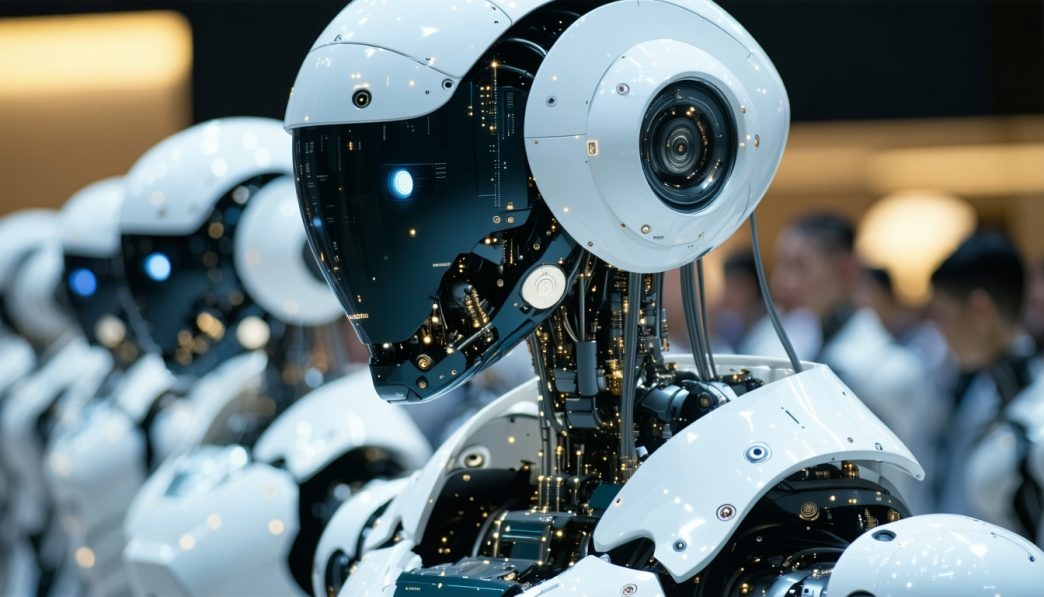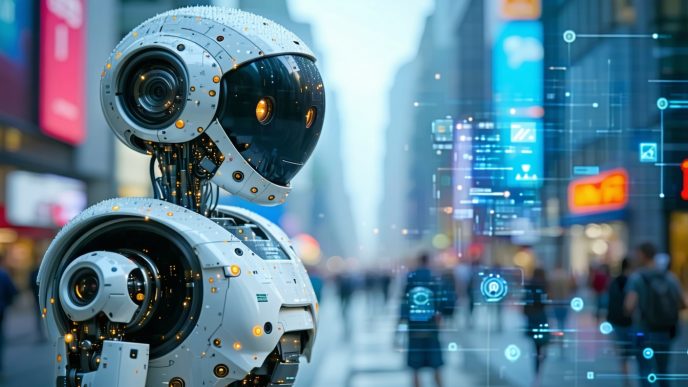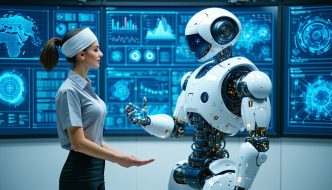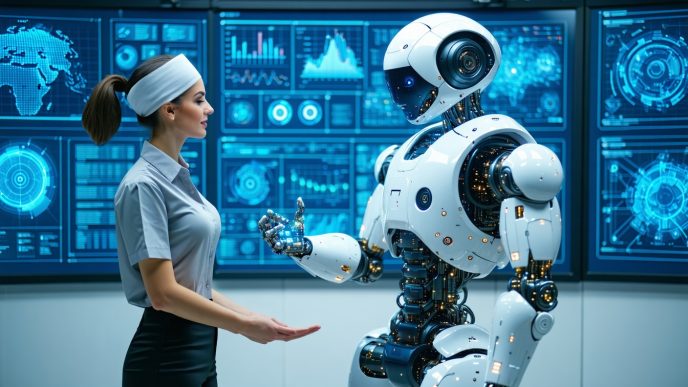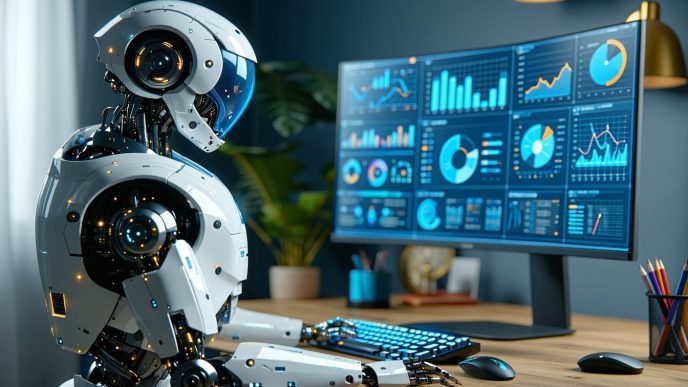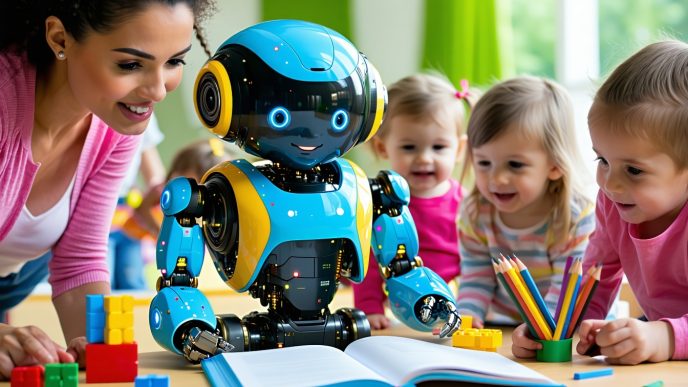Introduction to Humanoid Robots
Defining Humanoid Robots
Humanoid robots are robotic devices designed to resemble and mimic human behavior and appearance. They often possess features such as a head, torso, arms, and legs, enabling them to perform tasks that are typically associated with human activities. These robots can exhibit varying degrees of mobility, interactivity, and complexity in design.
The main purpose of humanoid robots is to interact with humans and operate in environments specifically tailored for people. This allows them to assist with daily tasks, provide companionship, and serve in roles across various sectors, including healthcare, education, and security.
Evolution of Humanoid Robotics
The evolution of humanoid robots has been remarkable, spanning several decades. Initially, early robotic designs were simplistic and limited to basic movements and tasks. As technology progressed in areas such as artificial intelligence and robotics, humanoid robots have developed significantly.
Here is a brief timeline highlighting key advancements in humanoid robotics:
| Year | Milestone |
|---|---|
| 1950s | Development of the first simple humanoid robots that could perform basic functions. |
| 1980s | Introduction of more advanced robotics with programmable features. |
| 1990s | Emergence of robots with advanced vision and sensory technologies. |
| 2000s | Launch of highly sophisticated humanoid robots capable of more fluid movements. |
| 2010s | Integration of AI enabling robots to learn from interactions and improve over time. |
| 2020s | Introduction of humanoid robots like Tesla Optimus and Assembly AI Phoenix showcasing human-like capabilities and social interaction. |
The rapid development of technology continues to push the boundaries of what humanoid robots can achieve, making them increasingly viable for home use. Advancements in areas such as humanoid robot locomotion systems, voice interfaces, and AI models contribute to the rising interest in utilizing these robots for domestic purposes.
Functionality of Humanoid Robots
Humanoid robots are being developed to perform a variety of tasks, aimed at enhancing convenience and efficiency in everyday life. Their capabilities continue to evolve, making them increasingly useful for home use.
Tasks Humanoid Robots Can Perform
Humanoid robots are designed to execute a range of tasks that can be particularly beneficial in home environments. Below are some common tasks that these robots can perform:
| Task | Description |
|---|---|
| Household Chores | Cleaning floors, doing laundry, and other daily chores. |
| Cooking Assistance | Helping with meal preparation and even cooking. |
| Companionship | Providing companionship and social interaction. |
| Monitoring | Keeping an eye on safety and security within the home. |
| Elder Care | Assisting elderly individuals with everyday activities. |
For a deeper understanding of some specific tasks, check out humanoid robots for daily chores and humanoid robots in elder care.
Advancements in Humanoid Robot Capabilities
Recent advancements in technology have greatly enhanced the capabilities of humanoid robots. Key improvements include:
- AI Integration: The integration of advanced artificial intelligence (AI) models allows humanoid robots to learn from their environments and adapt their behaviors. This enhances their ability to understand and interact with humans.
- Navigation Systems: Enhanced navigation capabilities enable humanoid robots to move around homes efficiently. This includes the use of sensors that help them avoid obstacles and navigate through various spaces. Additional information can be found in our article on humanoid robot navigation.
- Voice Interfaces: Many humanoid robots are now equipped with voice recognition technology, allowing them to respond to spoken commands. This feature improves the ease of interaction between humans and robots. For more on this, refer to voice interfaces in humanoid robots.
- Customization Options: Technological advancements also enable the customization of humanoid robots to better fit individual user preferences. This encompasses physical design, functionalities, and personality traits. For more details, visit our article on humanoid robot customization.
The combination of these advancements positions humanoid robots as valuable additions to home life, potentially transforming daily routines. As technology progresses, the roles and functionalities of these robots will likely continue to expand.
Humanoid Robots in Home Settings
Humanoid robots are increasingly exploring their roles within home environments. Their design and functionality allow for various applications that can enhance everyday living.
Potential Applications in Household Tasks
Humanoid robots can assist in numerous household tasks, making life more efficient and manageable. Below are some of the prominent tasks they can perform:
| Task | Description |
|---|---|
| Cleaning | Robots can vacuum, mop, or dust surfaces, reducing the need for manual cleaning. |
| Cooking | Advanced robots may assist in meal preparation, from chopping vegetables to cooking recipes. |
| Companionship | Humanoid robots can provide social interaction, combating loneliness and offering support to family members. |
| Health Monitoring | They can track health metrics or remind users to take medications, particularly beneficial for elderly care. Explore more on humanoid robots in elder care. |
| Entertainment | These robots can engage in conversations, play games, or provide media content, contributing to home entertainment. |
| Security and Surveillance | Humanoid robots can monitor home security, providing alerts and insights on any unusual activities. Learn about humanoid robots for security. |
Benefits of Having a Humanoid Robot at Home
Incorporating humanoid robots into home settings offers several advantages:
| Benefit | Explanation |
|---|---|
| Increased Efficiency | Robots can handle repetitive and time-consuming tasks, freeing up time for family members to focus on more enjoyable activities. |
| Consistent Performance | Humanoid robots can perform tasks consistently without fatigue, resulting in better quality outcomes in household chores. |
| Enhanced Safety | They can monitor for hazards, assist in emergencies, and provide a sense of security. |
| Customization Opportunities | Many humanoid robots can be tailored to meet specific household needs, making them versatile companions. Discover more on humanoid robot customization. |
| Improved Quality of Life | With assistance in daily tasks and social interaction, humanoid robots can enhance the overall quality of life for residents. |
Humanoid robots for home use are continuously evolving, showcasing their potential to fit effortlessly into daily routines. Their functional capabilities and benefits can redefine how households operate, transforming mundane tasks into more efficient, automated processes. For insights into their operational roles, explore our article on humanoid robots for daily chores.
Challenges of Implementing Humanoid Robots in Homes
As humanoid robots gain popularity for household use, several challenges must be addressed before they become commonplace in homes. These challenges span from technological limitations to important ethical and privacy concerns.
Technological Limitations
Humanoid robots designed for home use face a range of technological hurdles that impede their effectiveness and efficiency. These limitations include issues with mobility, precision, and interaction abilities.
| Challenge | Description |
|---|---|
| Mobility Issues | Many humanoid robots struggle to navigate diverse home environments, particularly in navigating stairs or confined spaces. |
| Precision and Dexterity | The ability to perform intricate tasks, such as gripping small objects, remains a significant challenge. |
| Interaction Skills | Effective communication can be limited, as some robots may not accurately interpret user commands or possess natural conversation abilities. |
Current advancements in robot mobility and interaction, such as humanoid robot locomotion systems and voice interfaces in humanoid robots, are essential for enhancing the usability of these machines.
Ethical and Privacy Concerns
As humanoid robots enter the home environment, ethical and privacy issues arise that need careful consideration. The integration of technology into personal spaces raises questions about the balance between convenience and personal privacy.
| Concern | Description |
|---|---|
| Data Privacy | Humanoid robots often process and store personal information, leading to concerns about data security and potential misuse. |
| Surveillance | The capability of robots to monitor household activities might infringe upon individual privacy rights. |
| Ethical Use | Decisions about tasks assigned to robots, especially in sensitive areas like elder care or companionship, pose ethical dilemmas regarding reliance on machines for emotional support. |
Addressing ethical implications is critical, particularly in fields such as humanoid robots in elder care and humanoid robots for companionship. Ensuring responsible development and deployment of humanoid robots is fundamental to their acceptance and efficacy in home settings.
In summary, while humanoid robots present exciting possibilities for home use, overcoming technological limitations and addressing ethical concerns are essential steps toward a future where these robots can seamlessly integrate into daily life.
Types of Humanoid Robots
The landscape of humanoid robots is diverse, ranging from various designs to several innovative models under development. Understanding these types provides insight into how they may serve households in the future.
Humanoid Robot Designs
Humanoid robots are designed to replicate human form and function, but they vary widely in design features. Here are some common design categories:
| Design Type | Description | Use Case Examples |
|---|---|---|
| Bipedal | Robots that walk on two legs to mimic human movement. | Tesla Optimus Robot, Agility Digit Robot |
| Wheeled | Robots that use wheels for mobility, often combining human-like features with practicality. | Unitree G1 Robot |
| Stationary | Robots that are often fixed in place but can exhibit human-like characteristics. | Ameca Robot by Engineered Arts |
| Soft Robotics | Robots made from pliable materials that can adapt their shape while retaining functionality. | Robotics projects related to humanoid robot customization |
These diverse designs are geared towards harnessing the capabilities of humanoid robots for home use.
Examples of Humanoid Robots in Development
Researchers and companies are actively developing various humanoid robots tailored for household applications. Here are notable examples currently under development:
| Robot Name | Developer | Key Features |
|---|---|---|
| Tesla Optimus | Tesla | Designed for labor tasks and companionship. |
| Sanctuary AI Phoenix | Sanctuary AI | Focused on human-like interaction and cognitive functions. |
| Apptronik Apollo | Apptronik | Targeted for general home assistance and logistics. |
| Xiaomi CyberOne | Xiaomi | Incorporates AI for emotional interaction. |
| Figure 01 | Figure | Engineered for intricate manual tasks and mobility. |
| Robotics Unlimited Zeus | Robotics Unlimited | Specialized for security applications. |
| Emotion Recognition in Robots | Various Developers | Research focused on developing emotional intelligence in humanoid robots. |
These advancements indicate a growing trend towards integrating humanoid robots into everyday life, especially for humanoid robots for home use. As these robots evolve, they will increasingly possess features that help in various household functions.
Humanoid Robots and Everyday Life
Interaction with Humanoid Robots
Humanoid robots are designed to mimic human behaviors and interactions, making them more relatable for users. These robots utilize advanced technology, including artificial intelligence and voice interfaces, to facilitate communication. This enables them to respond to verbal commands and engage in conversations, enhancing the user experience.
The interaction capabilities of these robots vary significantly based on their programming and hardware. Many humanoid robots come equipped with touch sensors and cameras, allowing them to recognize faces and respond to gestures. This type of engagement can create a more personalized experience, fostering a connection between humans and robots.
| Interaction Feature | Description |
|---|---|
| Voice Recognition | Allows robots to understand and respond to spoken commands. |
| Facial Recognition | Enables robots to identify and remember users based on their facial features. |
| Touch Sensors | Provides feedback when the robot is touched, enhancing engagement. |
| Gesture Recognition | Allows robots to understand and react to physical cues, such as hand movements. |
For example, some models, like ameca robot by engineered arts, showcase sophisticated emotional recognition capabilities, which can make interactions feel more natural.
Integration of Humanoid Robots into Daily Routines
Humanoid robots can play a significant role in everyday life by seamlessly integrating into household routines. They can assist with various tasks, such as providing reminders, managing schedules, and even executing simple chores. This capability can significantly enhance efficiency in the home.
| Daily Routine Integration | Examples |
|---|---|
| Meal Preparation | Assisting with cooking or food preparation tasks. |
| House Cleaning | Performing cleaning tasks such as vacuuming or dusting. |
| Personal Assistance | Offering reminders for appointments or medication. |
| Companionship | Providing social interaction and emotional support. |
Robots like xiaomi cyberone exemplify this potential by helping to manage household tasks while also providing companionship, especially for individuals who may feel isolated.
In addition to practical applications, humanoid robots can engage in recreational activities, such as playing games or reading stories, making them a versatile addition to family life. Increased familiarity with these robots could enhance their acceptance and effectiveness in households.
Overall, the integration of humanoid robots into daily routines showcases their potential benefits and highlights the evolving landscape of home automation and personal assistance. For more information about how these robots can assist with various tasks, explore our article on humanoid robots for daily chores.
Considerations for Home Use of Humanoid Robots
As humanoid robots continue to develop and become more integrated into everyday life, understanding the key considerations for their use in home environments becomes vital. This section focuses on the cost implications and the necessary maintenance for humanoid robots intended for domestic use.
Cost Factors
The initial investment in humanoid robots for home use can vary widely, depending on the features, capabilities, and brand. The costs may include not only the purchase price but also installation, customization, and potential software updates. Below is a table illustrating the estimated costs associated with various humanoid robots designed for home environments:
| Humanoid Robot | Estimated Cost (USD) | Features Included |
|---|---|---|
| Tesla Optimus Robot | $20,000 – $25,000 | General assistance, mobility |
| Sanctuary AI Phoenix | $10,000 – $15,000 | AI companion, household tasks |
| Xiaomi CyberOne | $7,000 – $12,000 | Interaction, basic tasks |
| Agility Digit Robot | $5,000 – $10,000 | Navigation, lifting capabilities |
| Robotics Unlimited Zeus | $2,500 – $5,000 | Basic interaction, monitoring |
The diverse pricing reflects the differences in technology and functionality among these robots. Homeowners should weigh the initial costs against the expected value and utility to determine if the investment aligns with their needs.
Maintenance and Upkeep
Regular maintenance for humanoid robots is essential to ensure prolonged performance and safety in home environments. Like any advanced technology, humanoid robots require certain care measures, which include software updates, hardware checks, and proper cleaning. Below is an overview of typical maintenance tasks required for these robots:
| Maintenance Task | Frequency | Purpose |
|---|---|---|
| Software Updates | Monthly | Ensures optimal performance and added features |
| Battery Checks | Bi-weekly | Maintains operational efficiency |
| Cleaning Sensors and Joints | Weekly | Prevents dirt buildup that can impact functionality |
| Performance Diagnostics | Quarterly | Identifies and resolves technical issues |
Homeowners should be prepared for the regular upkeep of their humanoid robots to ensure they function as intended. Neglecting maintenance could lead to decreased efficacy and lifespan, making it essential to incorporate these tasks into a household routine.
By understanding the costs and maintenance requirements associated with humanoid robots, potential owners can make informed decisions regarding their home use. For more insights on the practicalities of utilizing such technology in everyday life, visit our article on humanoid robots in smart homes.
The Future of Humanoid Robots in Homes
The future of humanoid robots in residential settings is a topic of great interest as technology evolves. Humanoid robots are poised to become an integral part of the home ecosystem, enhancing daily life in numerous ways.
Predictions and Speculations
Experts predict that humanoid robots for home use will display significant advancements in their capabilities and functionalities within the next decade. A large number of households may adopt humanoid robots by 2030. Key predictions include:
| Year | Predicted Household Adoption Rate (%) |
|---|---|
| 2025 | 15% |
| 2030 | 40% |
| 2040 | 70% |
As robots become more sophisticated, they will likely perform various household tasks. Tasks may include cleaning, cooking, and caregiving, which will enhance convenience. Specialization may emerge, leading to robots tailored for specific functions, like humanoid robots for daily chores or humanoid robots in elder care.
Impact on Society and Lifestyle
The introduction of humanoid robots into homes could revolutionize how families interact with technology. These robots may change daily routines, offering companionship and assistance in navigating tasks. The impact on society may include:
- Increased Efficiency: With robots taking on repetitive chores, individuals can focus on more meaningful activities or leisure pursuits.
- Enhanced Safety: Humanoid robots may provide security and monitoring services, reducing burglary and other safety concerns, which aligns with developments in humanoid robots for security.
- Emotional Companionship: Robots may serve as companions, particularly for the elderly or those living alone, providing emotional support and interaction.
- Learning Opportunities: In educational settings, humanoid robots could aid in teaching or tutoring, contributing to a more personalized learning experience. For insights on this area, refer to humanoid robots for education.
The integration of humanoid robots into everyday life also raises considerations regarding privacy, ethics, and mental health—topics which will require ongoing discussions as technology progresses. Balancing the benefits with potential challenges will be essential to ensure that humanoid robots enhance the quality of life in homes while respecting personal boundaries and social norms.
The future promises to blend technological advancements with human experiences, creating an environment where robots contribute positively to household dynamics.

